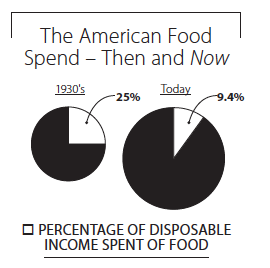Heading out the door? Read this article on the new Outside+ app available now on iOS devices for members! Download the app.
1. Artificial Sweeteners
In May – some 12 years since the last time a high-intensity artificial sweetener was approved for use in the United States – the US Food and Drug Administration (FDA) approved the production and usage of a new sugar substitute called advantame. Think of advantame as a cousin to aspartame, with a similar chemical composition. The approval is sweet news for many manufacturers, but a bitter pill to swallow for many people, say critics. “An initial concern is that in a key cancer study in mice, the number of mice that survived to the end of the study was below FDA’s own scientific recommendations and is therefore inadequate to provide confidence in the safety of a chemical likely to be consumed by millions of people,” said Center for Science in the Public Interest Senior Scientist Lisa Lefferts in a statement.
Meanwhile, a recent study presented at the American College of Cardiology’s 63rd Annual Scientific Session revealed that postmenopausal women who consume two artificially sweetened diet drinks a day may be more likely to experience cardiovascular problems such as stroke or heart attack.
2. Food Dyes
“Trix are for kids,” says the cartoon bunny, but in fact your little ones are better off with real rabbit food such as carrots and celery. The breakfast cereal, sold since 1955 and heavily marketed to children, nearly topped the list of foods loaded with artificial food dyes in a recent study by Purdue University. Researchers report that a single serving of Trix has 36 milligrams of Yellow 6, Blue 1 and Red 40. The worst offender among the cereals tested? That cute pirate Cap’n Crunch, whose Oops! All Berries cereal contained 41 milligrams of artificial colors. Researchers also tested artificial dye amounts in candies, baked goods and other brand-name products popular with kids. In past studies, food dyes have been shown to cause behavioral problems and hypersensitivity reactions in some children, while dyes have also caused cancer in animal studies, so needless to say, foods containing such ingredients are best avoided.
See alsoThe 20 Most Powerful Superfoods of the Moment
3. Energy Drinks
Instead of guzzling down a sugar-laden Gatorade, adolescents should limit their consumption of energy and sports drinks to after “vigorous, prolonged activity” only, say researchers from the University of Minnesota and Duke University. That’s because consumption of sports and energy drinks is linked with higher levels of smoking, more video-game playing and other unhealthy behaviors among adolescents. While researchers still don’t know exactly why such behaviors are associated with energy drinks, they speculate that the drinks’ high doses of caffeine increase the risk of overstimulation of the nervous system, which may encourage teens to find greater stimulation in other areas or substances, such as nicotine.
See also Mood-Boosting Juice
4. Canola, Soybean and Corn Oil
Take a deep breath: Those supposedly healthy oils you’ve been cooking with could be harming your lungs, according to a recent Northwestern University Feinberg School of Medicine study published in the journal Respiratory Research. Canola, soybean and corn oils are rich in vitamin E, but it’s the form of vitamin E found in those oils – gamma-tocopherol – that’s associated with reduced lung capacity, which senior author Joan Cook-Mills, PhD, says “is like an asthmatic condition” where people take in less air that’s harder to expel and have more difficulty with breathing. “Considering the rate of affected people in this study, there could be 4.5 million individuals in the US with reduced lung function,” said Cook-Mills,“as a result of their high gamma-tocopherol consumption.”
See also Five Immunity Boosters For Winter
5. Farmed Fish
When face-to-face with the fishmonger, it’s easy to choose the lower-cost, farmed salmon over the typically more expensive wild kind. But as a seminal study published in Science in 2004 revealed, farmed salmon contains “significantly higher” levels of organochlorine pesticides than wild. These types of pesticides may cause cancer and can cause damage to the central nervous system, thyroid and bladder in humans if there is long-term exposure. Even short-term exposure to these pesticides can cause unpleasant symptoms such as headache, respiratory problems and nausea. The study authors concluded that “risk analysis indicates that consumption of farmed Atlantic salmon may pose health risks that detract from the beneficial effects of fish consumption.”
6. Cheap Food
Pinching pennies just doesn’t make sense when it comes to fueling your body. A recent report conducted by the RAND Corporation found that inexpensive edibles may be causing the obesity epidemic in the United States. We’re eating more high-calorie food, and more of it, thanks to the fact that we now have the cheapest food available in history. As the study, published in May in the journal CA: A Cancer Journal for Clinicians reveals, Americans spend 9.4% of their disposable income on food today, compared with 25% in the 1930s.
